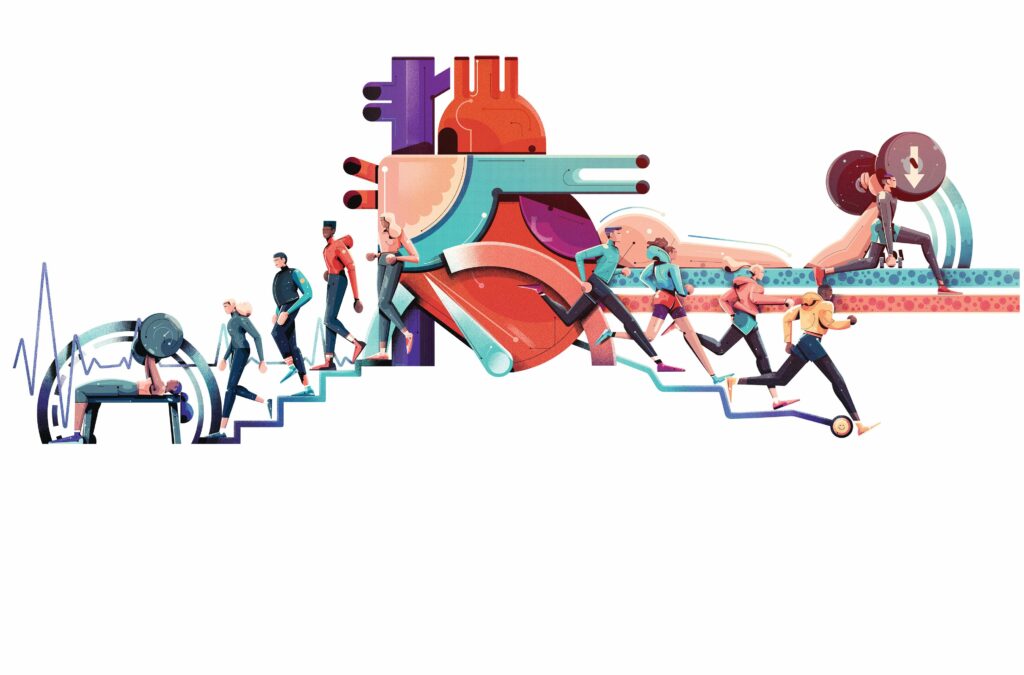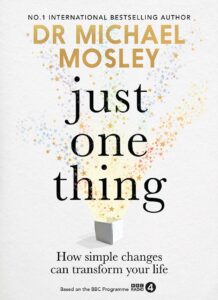THE NEW WORLD OF ECCENTRIC EXERCISE
RUNNING UP STAIRS? LIFTING WEIGHTS? CLIMBING HILLS? IT TURNS OUT DOING JUST THE OPPOSITE MIGHT BE BETTER FOR YOU

O ne of the best ways to get the most out of any workout is to make it ‘eccentric’. You might think that running up a hill is better for you than jogging down it, or that climbing a flight of stairs is going to challenge your muscles more than walking down, but in fact, the opposite is true. It seems crazy, but this is the new science of ‘eccentric exercise’.
The name comes from the fact that contracting your muscles (to climb stairs or lift weights) is called ‘concentric exercise’, but any work that goes into those muscles while they are stretched and elongated (as you go downstairs or lower the weights) is known as ‘eccentric exercise’ (pronounced ‘ee-centric’).
Tony Kay is professor of biomechanics at the University of Northampton. He explains that all forms of exercise create microscopic damage to the muscles. This stimulates the release of hormones that trigger your cells to rebuild that muscle stronger than before. Concentric exercises (such as bicep curls or squats) recruit and fatigue many different muscle fibres.
Although the eccentric part of the exercise (as we lower the weight, or sink down into a squat) recruits fewer fibres, it does so with a load that is up to four times higher. This, says Kay, creates far greater microscopic damage to those cells and fibres.
“The greater damage means the body burns more calories in the process of repair and recovery after the exercise has been performed,” he says. “This raises the metabolic rate and increases strength in a far more effective way than conventional forms of exercise.”
In one study, volunteers were randomly allocated to walking either up or down a set of stairs in a 10-storey building twice a week, and taking the lift in the other direction. Both groups saw health improvements, but the group who walked down rather than up the stairs ended up with greater improvements in resting heart rate (a reliable overall measure of fitness). They also saw a greater improvement in their insulin sensitivity and blood fat levels.
Plus, the group walking down saw greater improvement in muscle function and bone density than the group walking up. In fact, the group doing what I would consider to be the easier task improved their muscle strength by 34 per cent – that’s twice as much as those who had to walk up the stairs each time!
“Studies have shown the benefits of eccentric exercise in young, healthy male footballers, as well as in over-65s”
In addition, the group walking down showed greater improvements in a balance test, which would lead to a reduced risk of falls and injury.
Another study comparing older adults doing traditional versus eccentric exercise found the eccentric group had a 38 per cent improvement in leg strength, compared to just an 8 per cent improvement in the traditional exercise group.
Other studies have shown the benefits of eccentric exercise in young, healthy male footballers (who saw dramatic increases in strength), as well as in over-65s (who showed 30 to 50 per cent increases in strength and a 10 per cent increase in muscle mass in just six weeks). “The effects are far, far greater than we would expect from normal exercise,” concludes Kay.
This is really impressive – and completely counterintuitive. And it turns out that any exercise that requires you to lengthen your muscles under resistance will have the same beneficial effect, whether it’s running downhill or slowly lowering yourself down into a squat or a press-up. The way it works is that when you’re going down, the muscles in your legs or arms lengthen to slow the pace of descent. Similarly, when you’re lowering a set of weights, the muscles lengthen and have to work harder to protect your body from damage.
Kay points out that both yoga and pilates feature poses that require you to slowly lower yourself, thereby causing an eccentric contraction, which will, he says, “increase flexibility, muscle mass, bone density and strength”.
Done right, not only will eccentric exercises keep you in good shape, they will also help your body to burn calories after you’ve finished – more so than a seemingly ‘tougher’ workout. This could be the metabolic secret that has been hiding in your workout all along!
This extract was taken from Dr Michael Mosley’s new book, Just One Thing (£16.99, Short Books), which is based on the BBC Radio 4 podcast of the same name.

Listen to the Just One Thing series with Dr Michael Mosley. Available on BBC Sounds. bit.ly/just_one_thing_